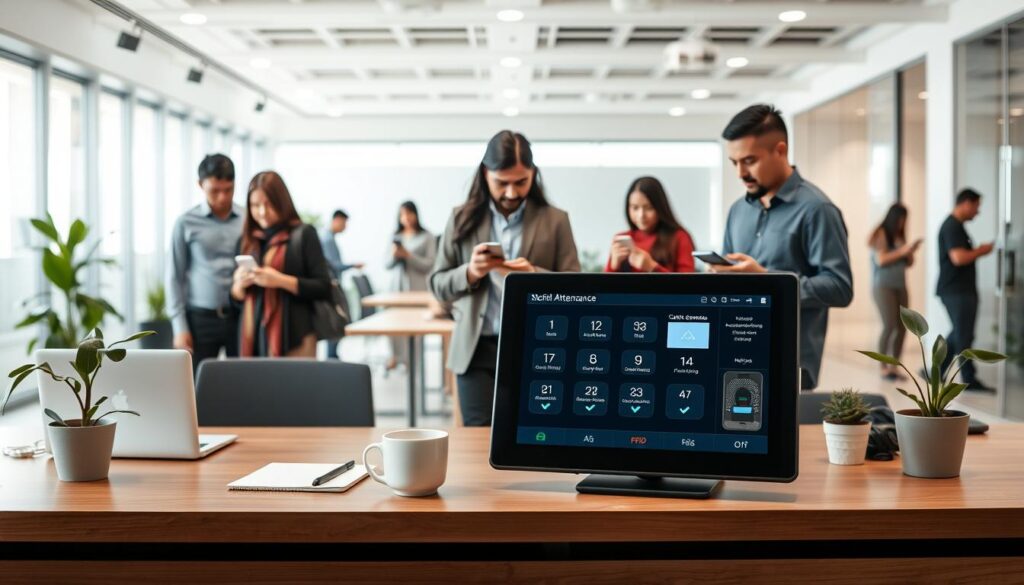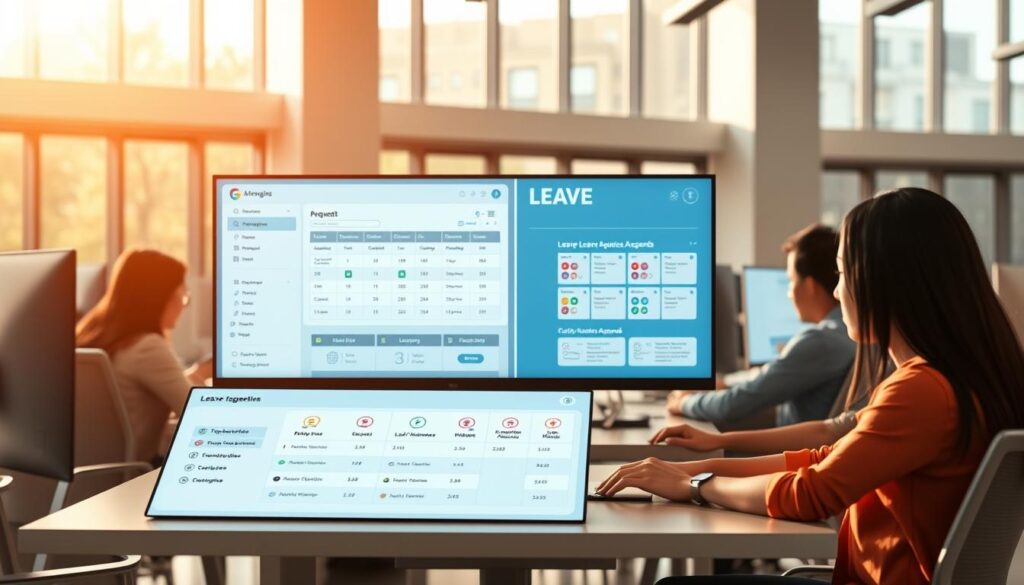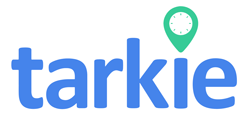Are you still using old ways to track employee attendance and leave? You might not know how much better an integrated system can make things. Today, linking attendance systems with leave management is key for modern HR software.
In the fast-changing world of workforce management in the Philippines, an integrated approach is crucial. It makes tracking employee time easier, cuts down on payroll mistakes, and boosts overall efficiency. With tools like EmpMonitor and Tempus Central, small businesses can track attendance and manage leaves better. This leads to a happier and more productive team.
Find out how combining these systems can change your HR work for the better.
Key Takeaways
- Integration significantly improves payroll accuracy and reduces errors.
- A well-managed leave system can enhance organizational productivity by up to 30%.
- A streamlined leave management process contributes to higher employee retention rates.
- Real-time updates from integrated systems provide deeper insights into attendance patterns.
- Automated attendance tracking leads to reduced administrative burdens and increased efficiency.
Understanding Attendance Systems and Leave Management
Attendance systems are key for tracking who’s in the office. They use biometric tech and time clocks to get it right. This helps businesses work better and more efficiently.
Cloud-based systems are becoming popular. They let you check in from anywhere and see who’s there in real time. This is a big help for HR software.
Leave management makes it easy to handle time off. It automates the process of asking for and approving days off. This saves HR a lot of work and makes employees happier.
It also makes it clear and quick to get answers about leave. Companies are now linking attendance systems with leave management. This makes everything run smoother.
Mobile apps for time tracking make it easy to clock in and out. It’s convenient and fits with today’s work habits. This accuracy helps avoid mistakes in pay and makes employees trust their company more.
Tools for tracking attendance trends help managers spot problems early. This way, they can fix issues before they get worse.
Switching to automated systems cuts down on time spent on paperwork. It makes operations smoother and helps follow labor laws better. It also helps the environment by reducing paper use.
Benefits of Integrating Attendance Systems with Leave Management
Integrating attendance systems with leave management brings many benefits of integration. It makes HR operations better. Automated timekeeping helps manage employee schedules well. This means HR teams can spend more time on important tasks, not just paperwork.
With this integration, managing the workforce gets easier. It cuts down on costs from unplanned absences. In fact, it can save employers a lot of money.
Employees can easily request leave through user-friendly interfaces. This makes them happier. The systems also support remote and hybrid work, which is becoming more common.
Using these systems can make a company 20% more productive. It helps track attendance accurately, which is key for payroll and performance. With over 80% of timesheets needing fixes, automation is a big help.
The table below shows some key benefits of integrating attendance systems with leave management:
| Benefit | Impact |
|---|---|
| Reduced Administrative Burden | Improved HR efficiency and focus on strategic tasks. |
| Enhanced Accuracy | Minimized payroll errors and compliance issues. |
| Employee Satisfaction | Streamlined leave requests improve overall employee morale. |
| Productivity Increase | Up to a 20% boost in efficiency observed. |
| Data Security | Robust features prevent fraud and false entries. |

Key Features of a Comprehensive Attendance System
Organizations looking to improve HR operations should think about getting a comprehensive attendance system. These systems are key for being efficient and effective. They must allow for clocking in and out, managing leave, integrating with payroll, and reporting.
A biometric attendance system is great because it reduces fraud risks, which is a big plus for big teams. About 80% of companies see big benefits from using these systems. They often have features like alerts for missed clock-ins, cutting down attendance problems by 30%.
Being able to use the system on mobile devices is also very important. About 90% of cloud-based systems offer mobile access. This lets remote workers easily log their hours, making work more flexible. It also makes employees happier and more engaged, cutting down HR’s workload by 40%.
Advanced analytics are a big part of a good attendance system. They help spot trends in attendance and overtime, boosting productivity by 60%. Reporting tools make sure hours, leaves, and attendance are tracked right. Cloud solutions make payroll integration smooth, improving accuracy and speeding up processes.

Essential Features of Leave Management Systems
Leave management systems are key to making HR work smoother in companies. They help manage employee absences better than old paper systems. This makes them vital for improving how work gets done.
One big plus is the employee self-service portal. It lets workers handle their leave requests on their own. This cuts down HR’s work by up to 30%, freeing them to focus on bigger tasks.
Real-time reporting and analytics are also crucial. They help track different types of leave and make sure everything follows the law. This data helps spot trends in leave and overtime, boosting productivity.

Having everything in one place makes it easier to plan work around absences. This reduces work disruptions. Cloud-based systems let employees and HR manage leave from anywhere, making things more flexible and convenient.
Being able to tailor the system to fit your company’s needs is another big plus. It can handle different state laws and company rules. Automation makes tasks like updating leave balances quick and easy, keeping everything running smoothly.
| Feature | Benefit |
|---|---|
| Automated Leave Requests | Reduces human error associated with manual processes |
| Employee Self-Service Portal | Empowers employees to manage their own leave |
| Real-Time Reporting and Analytics | Enhances decision-making through data tracking |
| Centralized Visibility | Improves planning around scheduled absences |
| Customization | Adapts to specific state laws and company policies |
| Cloud-Based Access | Facilitates remote leave management |
In 2023, it’s all about using advanced features in leave management systems. Companies that do this will see better efficiency and handling of employee absences.
Steps to Integrate Attendance Systems with Leave Management
Integrating attendance systems with leave management is a strategic process. Start by checking your current systems and finding any missing pieces. This step helps you know what you need to achieve a smooth transition.
Choosing the right software is key. Look for HR software that links attendance with leave management well. Tools like Tempus Central have time clock solutions that work with many HR systems, making integration easier.
After picking your software, working with IT teams is crucial. They can solve technical issues and make sure the system fits your needs. Train your staff well on the new system. This boosts their use and makes things more efficient.
After the integration, it’s important to check how it’s working. Regular checks help keep things in line and find ways to get better. This keeps your system running well over time.

Best Practices for Effective Integration
Integrating time and attendance software with leave management needs focus on best practices. These practices help both the company and its employees. It’s important to involve employees in the change to reduce resistance and increase acceptance.
Start by clearly explaining the integration and its benefits. This helps everyone understand the new system.
Keeping data accurate is key. Automated leave management systems cut down on errors and save time. As companies grow, keeping records right is crucial for following rules and working well.
Training is essential for employees to use the new systems well. Good training helps everyone adjust quickly. It ensures they use the tools fully.
Setting realistic goals and checking progress helps see how well the system works. This is important for making sure it meets needs.
Putting employee well-being first means having good leave policies. Companies like Salesforce offer mental health days to boost job happiness. Startups need simple leave policies, while big companies need detailed ones.
In retail or hospitality, leave policies must change with busy seasons. Making leave management easy to use on phones helps remote workers. These steps make the system clear and keep everyone in the loop.
Challenges in Integrating Attendance Systems and Leave Management
Integrating attendance systems with leave management can be tough. Companies face data migration issues when moving data to new systems. It’s key to make sure data is correct before moving it to avoid mistakes.
Getting employees to use new systems can also be hard. Changing how employees work can be slow. A good plan for change can help by training and supporting users.
Keeping the system running smoothly after it’s set up is important. Vendors need to provide regular updates and support. Without this, systems can fail, and work can get harder.
Many small and medium-sized businesses in the Philippines still use old ways to manage leave. This hurts productivity and makes employees unhappy. Using integrated systems can make work better and keep employees happy. For more tips on using timekeeping software with payroll, check out this resource.
By tackling these challenges, businesses can make the most of integrated systems. This leads to better work and happier employees.
Integration for Employee Self-Service and Transparency
Integrating attendance systems with leave management boosts employee self-service and HR transparency. Staff can check and manage their attendance and leave through mobile apps or self-service portals. This builds trust and accountability in the workplace.
Systems like EmpMonitor offer real-time tracking. This lets employees see their attendance status right away. It helps keep records accurate, reducing errors and disputes.
Automated notifications keep employees updated on leave requests. This improves communication and ensures everyone follows company policies.
Adopting automated systems cuts down on manual work and costs. Employees are happier with easy-to-use interfaces for leave requests. These systems also help with labor law compliance and accurate records, crucial for audits.
In the Philippines, focusing on employee self-service in HR strategies is key. It ensures transparency and effective attendance management through automated notifications and real-time tracking.
Future Trends in Attendance Systems and Leave Management
The world of attendance systems and leave management is about to change a lot. We’re seeing more use of biometric tech and cloud-based solutions. These changes will change how companies handle who’s in and who’s out.
Biometric tech, like facial scans and fingerprint checks, will make things more accurate and safe. This fits well with the need for touchless systems after the pandemic. It makes things easier for everyone involved.
Cloud-based systems will bring more flexibility and growth to businesses. They let people log in from anywhere, which is great for remote work. Mobile apps will also make it easy for staff to check their records and request time off.
Artificial intelligence and machine learning will also play a big role. They can predict who will be absent and help plan better. This will help HR teams make better choices, leading to more productivity and better management.
Blockchain technology will also become important for keeping attendance records safe. It makes sure records can’t be changed, helping companies follow the law better. This will make attendance tracking more efficient and clear for everyone.
| Trend | Description |
|---|---|
| Biometric Technology | Utilization of multi-modal systems for enhanced accuracy and contactless authentication. |
| Cloud-Based Solutions | Flexible access, scalability, and real-time updates, streamlining attendance tracking. |
| AI and Machine Learning | Forecasting attendance patterns and automating anomaly detection for smarter resource management. |
| Mobile Applications | Allowing employees to manage attendance and leave requests directly from their devices. |
| Blockchain Technology | Ensuring tamper-proof records and compliance tracking across decentralized platforms. |
Conclusion
Integrating attendance systems with leave management is key for businesses in the Philippines. It helps simplify HR operations. This approach lets HR teams focus on important tasks, not just paperwork.
Using this technology brings many benefits. It makes leave applications smoother and attendance tracking more accurate. This ensures companies follow labor laws correctly.
Adopting these systems also improves employee happiness. It makes work processes more efficient. This leads to a better work environment for everyone.
By using these systems, companies can handle busy times better. They stay productive and follow the law. This investment helps businesses grow and succeed in a competitive market.
